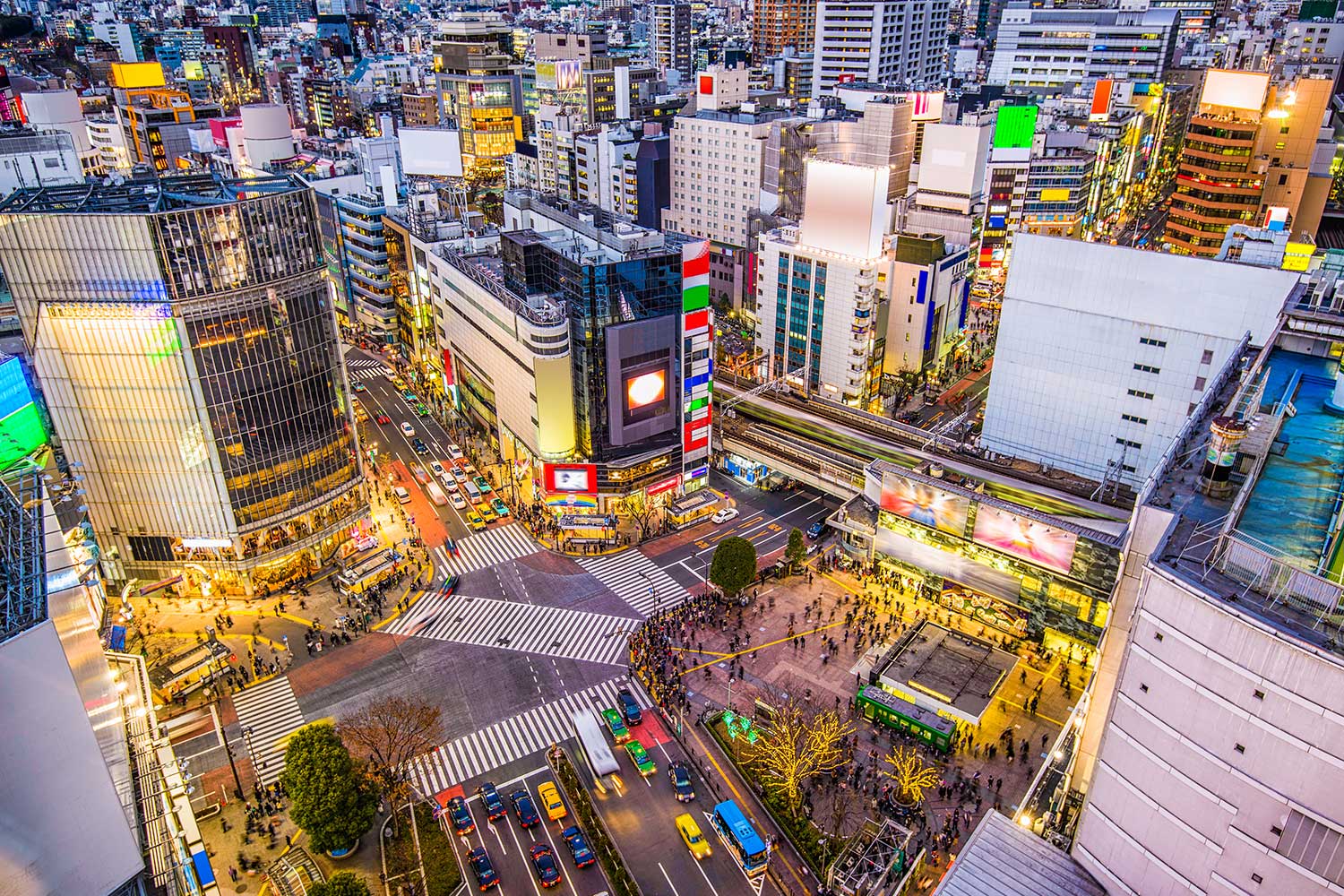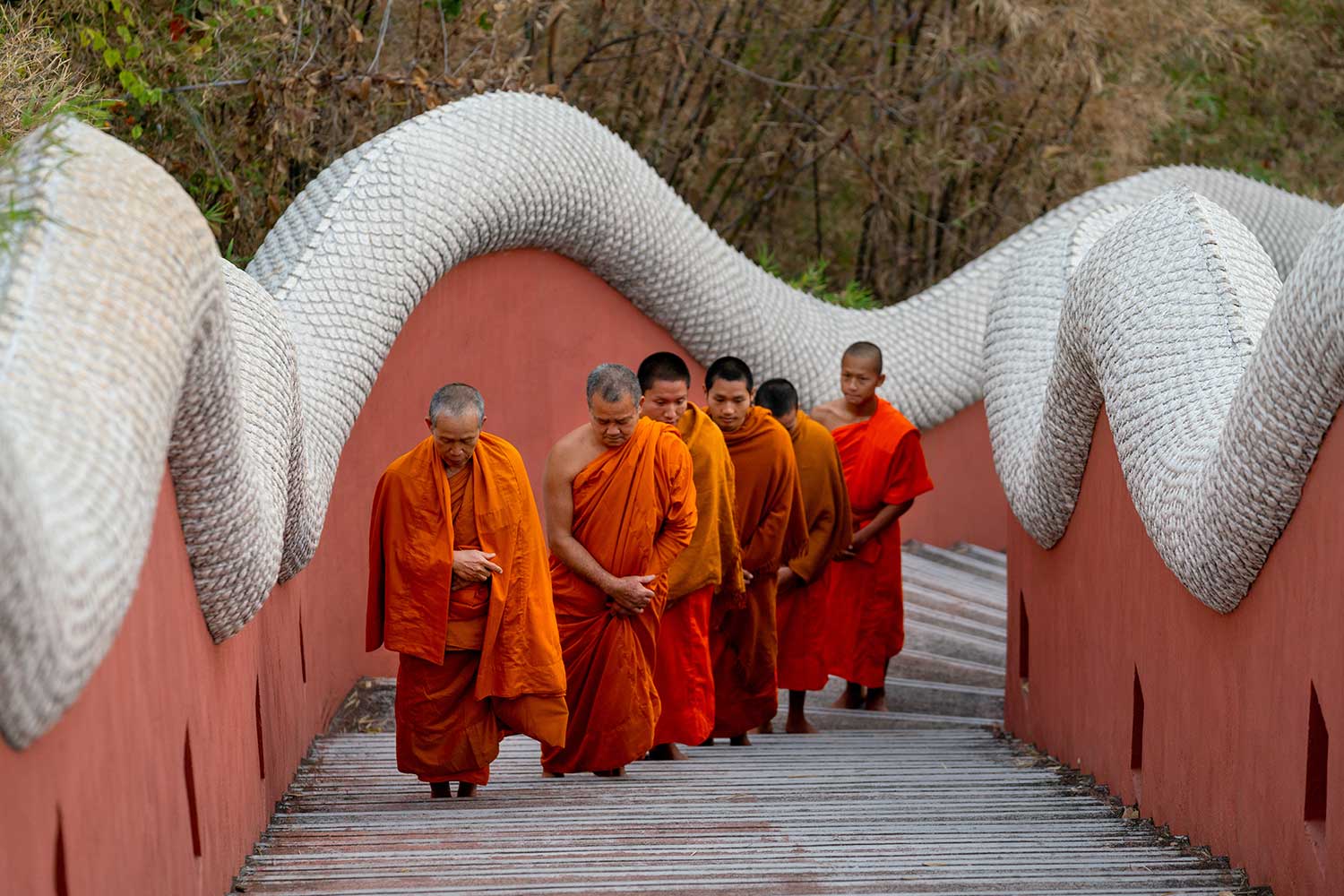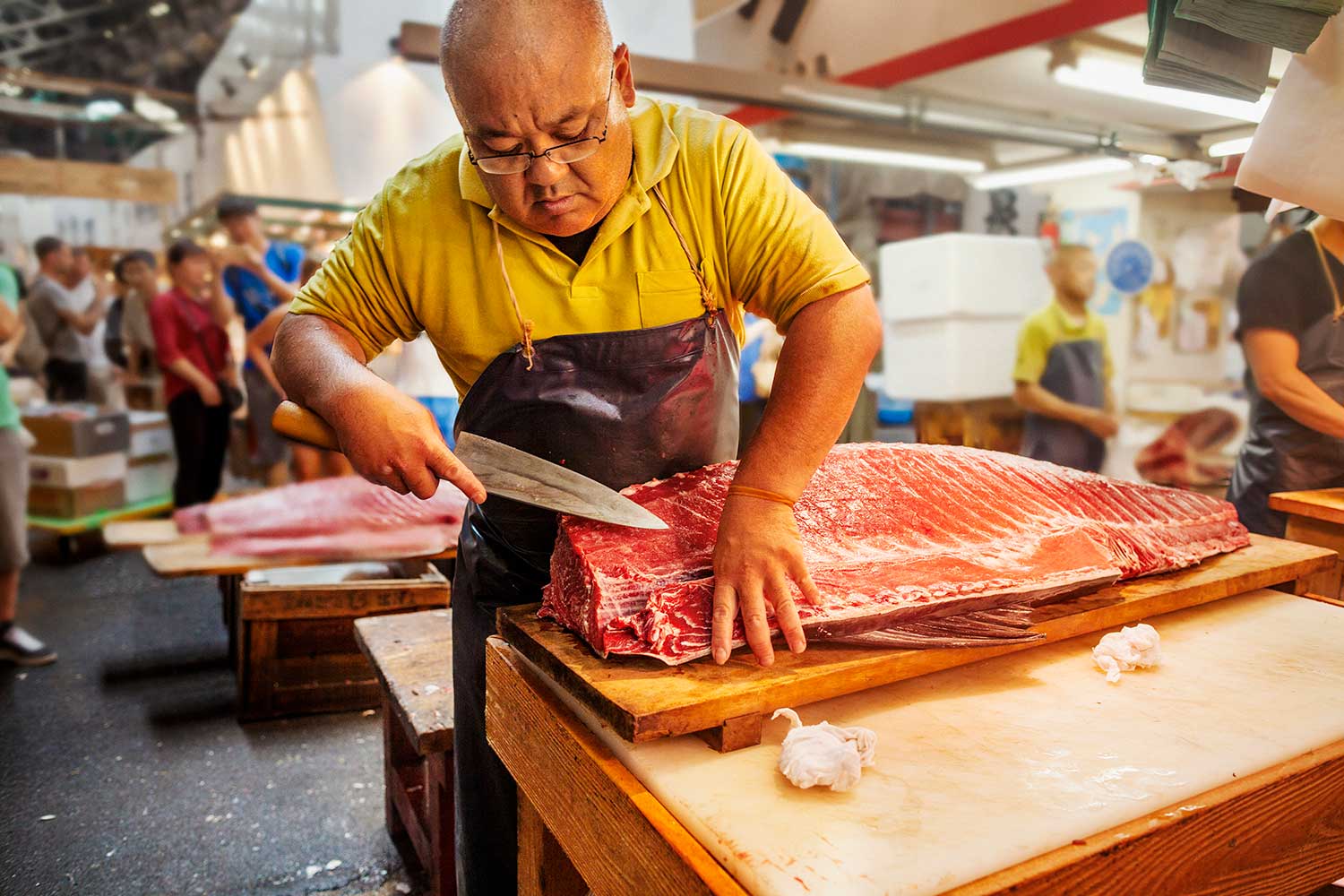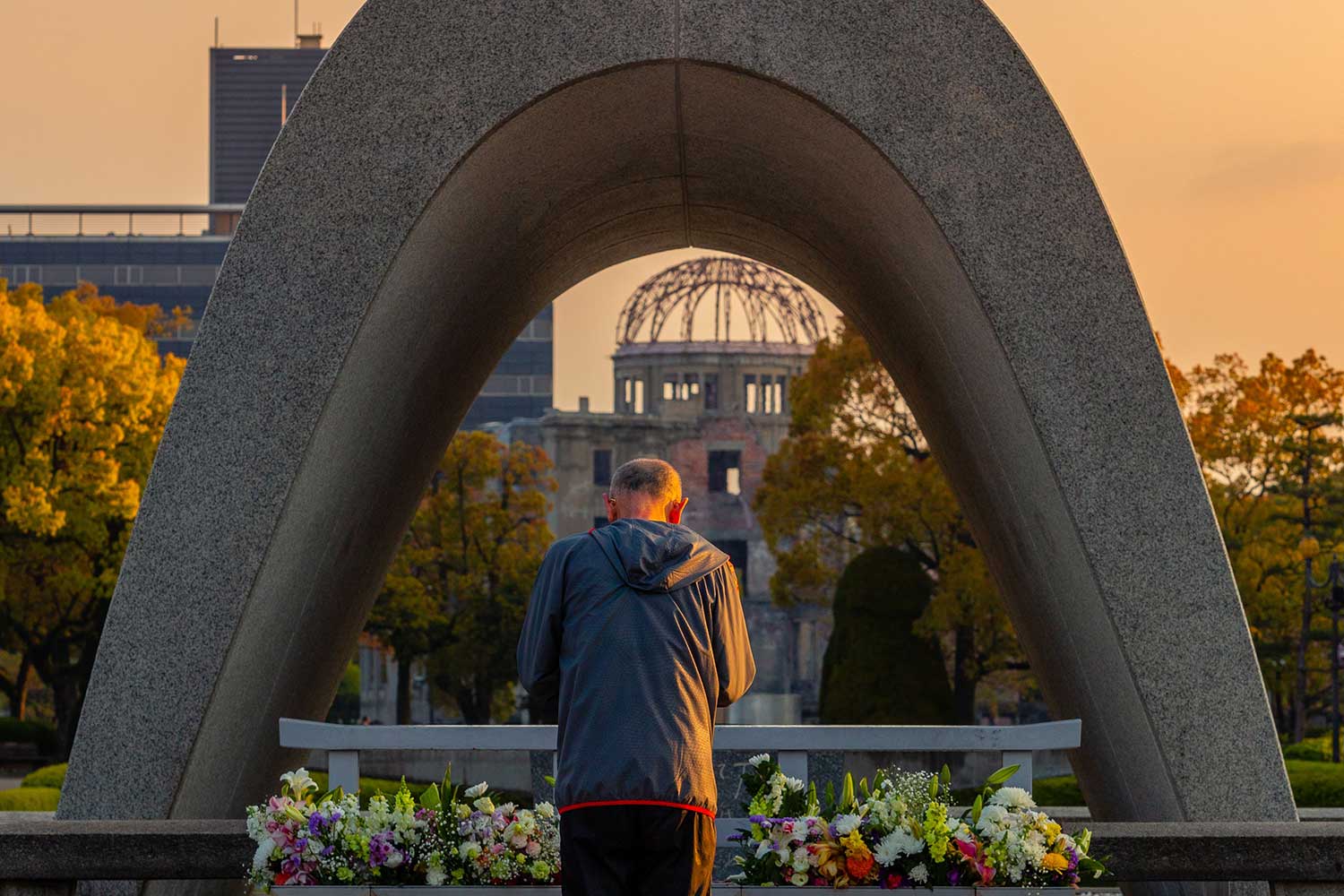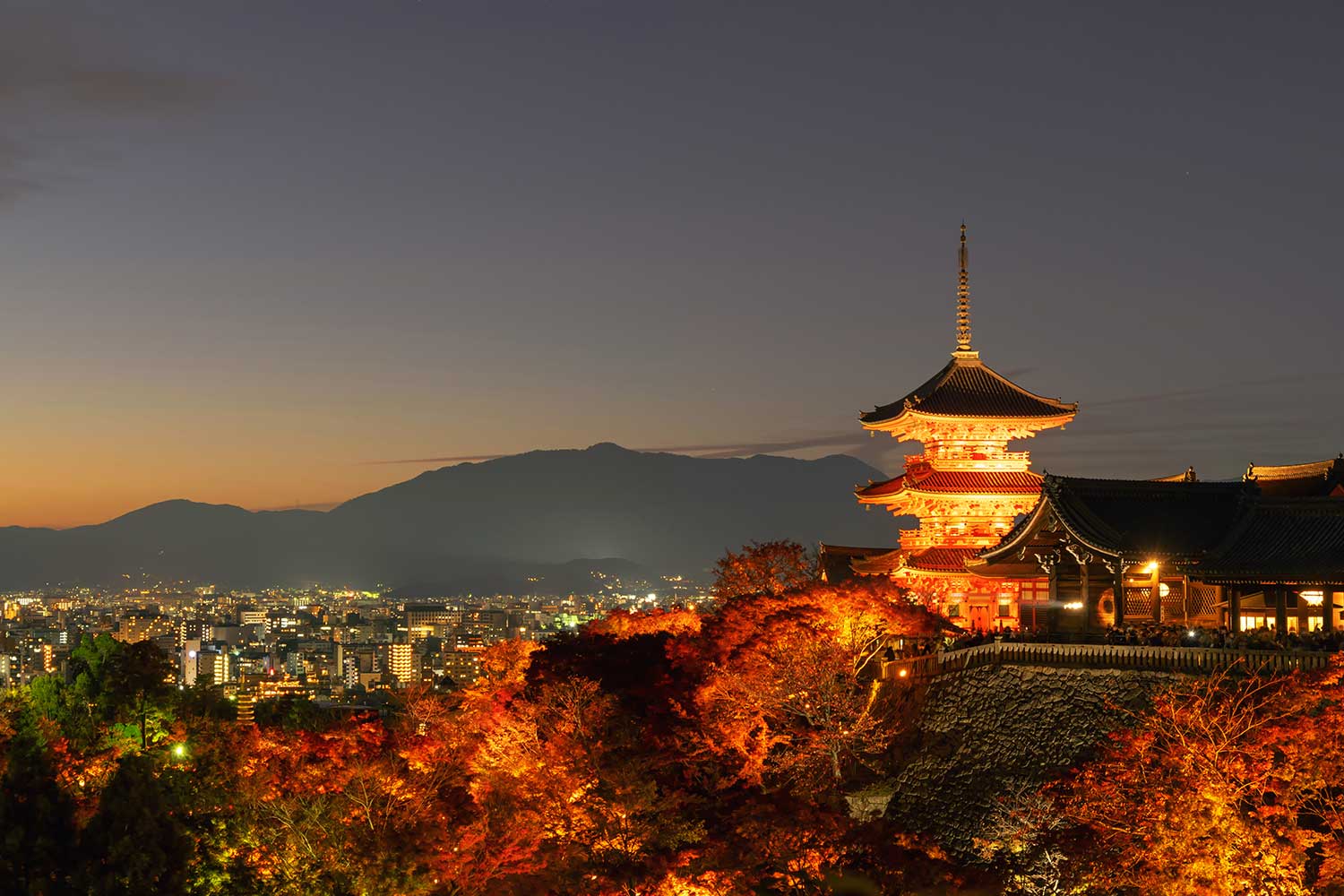DAY 1: DEPART TOKYO, JAPAN
Arrive at Tokyo International Cruise Line Terminal at 2:00pm and meet your Expedition team for check-in at 3:30pm, before boarding Coral Geographer at 4:30pm, where there is time to settle into your stateroom before departure at 7:00pm. Take the time to become acquainted with all the facilities onboard as we set sail towards the Sea of Japan. This evening, join the Captain’s welcome drinks and meet your crew and fellow guests as the sun sets.
SHIMIZU, JAPAN
Shimizu, translating to ‘pure water’ in Japanese is one of Japan’s most scenic ports with unparalleled views of Mt. Fuji. This is our entry port into Japan. From here we will visit the Mt. Fuji World Heritage Centre, constructed to commemorate the mountain’s designation as a UNESCO World Heritage Site. The centre boasts a viewing deck and a variety of exhibitions pertaining to the volcano’s seismology, history, and cultural significance. The building has an inverted conical form that reflects in the pond outside to reveal the shape of the iconic mountain. Afterwards enjoy self exploration to discover the city, including street markets and local food. We will also enjoy a visit to the nearby Fujisan Sengen Shrine.
In the afternoon visit the Obuchisasaba Tea Plantation area. Take a walk between sites to enjoy local tea and a short presentation on the long history of this famous tea plantation with spectacular views of Mount Fuji.
SHINGU, JAPAN
Guests will visit important shrines located in Shingu City on the southeast coast of the Kii Peninsula – Kumano Hayatama Taisha Shrine, and Kumano Hongu Taisha Shrine.
For keen walkers, the 4-hour Daimon-zaka trail can be traversed through tall cedar forests. This is an impressive cobblestone staircase slope that runs from the base of the valley to Kumano Nachi Taisha Shrine, Seiganto-ji Temple, and Nachi waterfall.
We will drive through the stunning Dorokyo Gorge stopping for unforgettable photo opportunities.
KOBE PORT TO OSAKA / KYOTO, JAPAN
Today, you may choose to explore Osaka or Kyoto for the day.
Osaka: Immersive yourself in colourful, bustling Osaka, the food capital of Japan, where ancient and modern architecture collide. Visit Osaka Castle, join a guided tour of famous Dotonbori Street, stroll through Kuromon Market and take it all in from the observation deck in Umeda Sky Building.
Kyoto: Once the capital of Japan, Kyoto is a blend of modern and traditional, famous for its classical Buddhist temples, gardens, imperial palaces, Shinto shrines and traditional wooden houses. Learn of the rich history of this area as we visit these places as well as local street market, Nishiki Market, well-known for its fantastic takeaway food.
TOKUSHIMA, JAPAN
The region has particularly fertile soil and produces many different types of vegetables and fruit shipped to the mainland including Naruto sweet potatoes, the citrus fruit “sudachi”, lotus roots and strawberries. Tokushima is most famous for the Awa Odori Festival, celebrating Awa Japanese traditional dance.
We start our expedition with a quick stop to enjoy picturesque scenery at Whirlpool Viewpoint on your transfer to a local town. Shop the local establishments, or hike along tracks to the viewpoints above the town.
In Tokushima, visit the Otsuka Museum of Art, housing hundreds of artwork pieces including massive replicas of the Sistine Chapel. After lunch, we walk the streets between temples or visit the famous local Sake Brewery.
SHODOSHIIMA, JAPAN
One of the first islands born to the Gods in the creation myth of Japan, Shodoshima translates to ‘small bean island’, a fitting name for an island where traditionally soybean crops were processed into soy sauce, though is better known more recently for its olive plantations.
Learn about this time-honoured condiment with a 400-year-old history at the Marukin Soy Sauce Historical Museum. Experience the making of the Japanese famous Somen noodle and try your hand at dividing the noodles with long chopsticks. Hike or cable car in the Kankei Gorge ranked as one of Japan’s most beautiful gorges.
HIROSHIMA, JAPAN
Forever linked to the World War II tragedy that saw an atomic bomb dropped on the city in 1945, Hiroshima has since been rebuilt while retaining some historical heritage, with the Peace Memorial Park now the city’s most prominent feature. Shukkeien Garden dates as far back as the 1600’s with its valleys, mountains and forests represented in miniature with tea houses amongst the gardens an ideal spot to take time to enjoy the idyllic surrounds. Enjoy a guided tour of the A-bomb area, park and museum. You may wish to enjoy free time in the city.
MIYAJIMA, JAPAN
The famed Itsukujima shrine is one of Japan’s most recognisable symbols with its Shinto shrine and red torii gate seemingly floating upon the Seto Inland Sea. Itsukujima Shrine is a UNESCO World Heritage Site and a National Treasure.
Other important sites are Daisho-in, a temple of Shingon Buddhism and Reikado Hall, located on Mt Misen, the highest peak on Miyajima. Walking paths link Miyajima’s cultural sites and Maple Valley, providing the ideal pace with which to absorb centuries-old customs. Stroll around the island on either a guided or self-walk tour with a map, amongst the deer that wander the same sites, and take in the beauty of the island.
MATSUYAMA, JAPAN
High on Mount Katsuyama, Matsuyama Castle is one of Japan’s twelve original castles and stands at the heart of the city of Matsuyama. Constructed in the early 1600’s, the original tower collapsed after being struck by lightning. A three-story tower was added to the site two hundred years after. We have the option to use the cable car or hike up to Matsuyama Castle, where you will enjoy views of the surrounding city.
Next visit Ishiteji Temple, where Pilgrims dressed all in white are frequent. An inner temple connects to the main temple grounds via a dimly lit cave and 200m long tunnel that houses Buddhist statues, carvings, and drawings. Or, enjoy free time at Dogo township, known for it’s hot spring onsen.
KARATSU, JAPAN
This trading hub is known for its safe harbour and close proximity to other foreign trading ports. Here we will explore the island’s many idyllic surrounds including the Nanatsugama limestone caves, the bustling city area and markets, climbing to historic Karatsu Castle and one of Japan’s top waterfalls, Mikaeri Falls.
TSUSHIMA, JAPAN
Roughly halfway between the Japanese mainland and the Korean Peninsula, Tsushima was once a single island before a canal divided the island in two in the 1600’s, then into three islands in the 1900’s with a second canal constructed. Though in reality there are approx. 100 islands that collectively make up Tsushima with its abundance of natural beauty and untouched forests. Discover native flora and fauna as you hike up Mt Shimizu to visit the ancient Banshoin Temple, one of Japan’s three great graves built in 1615.
Hike the Mt Shimizu trail above the township to the castle ruins where 360° views are on offer and then down through oak and cedar forests, or take a moderate walk to the first viewpoint with a great view of the township below.
For those not wanting to hike, enjoy the beautiful Izuhara traditional township.
We visit the local Museum with interesting artifacts dating back to the 14th century.
(Vessel to conduct exit clearance from Japan to cross to South Korea.)
JEJU, SOUTH KOREA
Jeju Island’s Manjanggul lava tubes are regarded as the finest lava tube system of caves anywhere in the world and are recognised by UNESCO as a Global Geopark site for their unique geological features and volcanic landforms.
Today guests have an option to walk 60 minutes to the Seongsan Sunrise Peak (UNESCO world heritage site) with ocean and island views.
Dine for lunch at a local restaurant before heading off to explore the Manjang Lava Caves.
(Today we enter and exit South Korea.)
SASEBO, JAPAN
Visit the historical pottery town of Arita where Japan’s fine porcelain was first produced around 400 years ago. Arita-yaki pottery is now the most highly regarded pottery across all Japan with its ‘secret ingredient’ kaolin the essential mineral required to make fine porcelain.
Spend a relaxed afternoon where you can visit the well-known viewpoint over what is known as the 99 Islands, visit the Arita township with shops to purchase local items, or enjoy free time at the local shopping area near the port (within walking distance).
(Ship, guests, and crew will return to Japan and clear in with officials.)
AOKATA AND NAKADORI ISLANDS, JAPAN
The Goto Islands are best known for Christianity, while religion was banned, the ‘hidden Christians’ settled here and continued practicing their faith in secret until the ban was lifted in the 1870s. Goto Island translates into English as the ‘five island chain’, with Nakadori and Aokata Islands being two of the most populated. Here we can visit the Kashiragashima Village and church, visit beautiful Yagotame Park and Narao Shrine.
FUKUE ISLAND, JAPAN
Also a member of the Goto Islands, Fukue Island is the largest of the group with hilly terrain, temples, and churches.
Either hike Mt. Onidake, a dormant volcano which offers excellent views of the area, or choose the shorter hike option followed by a visit to Dozaki Church.
DAY 15: ARRIVE FUKUOKA, JAPAN
Our voyage ends in the Japanese port of Fukuoka. Disembark Coral Geographer at 8:30am and bid farewell to new-found friends, the Master and crew.
Fukuoka has great shopping, some of the best cuisine and accessibility to nature nearby.
This itinerary is an indication of the destinations we visit and activities on offer. Throughout the expedition we may make changes to the itinerary as necessary to maximise your expeditionary experience. Allowances may be made for seasonal variations, weather, tidal conditions, and any other event that may affect the operation of the vessel. Coral Expeditions suggests that you do not arrive on the day of embarkation or depart on the day of disembarkation due to any changes that may occur in scheduling.

